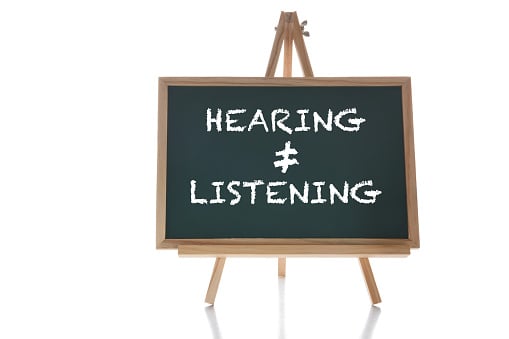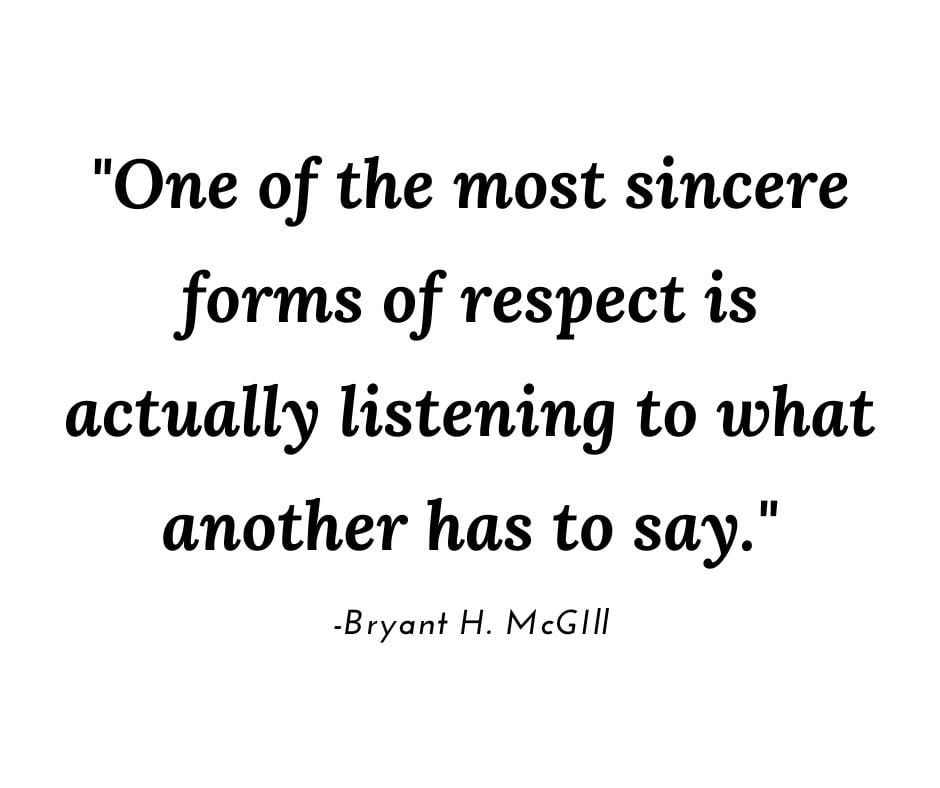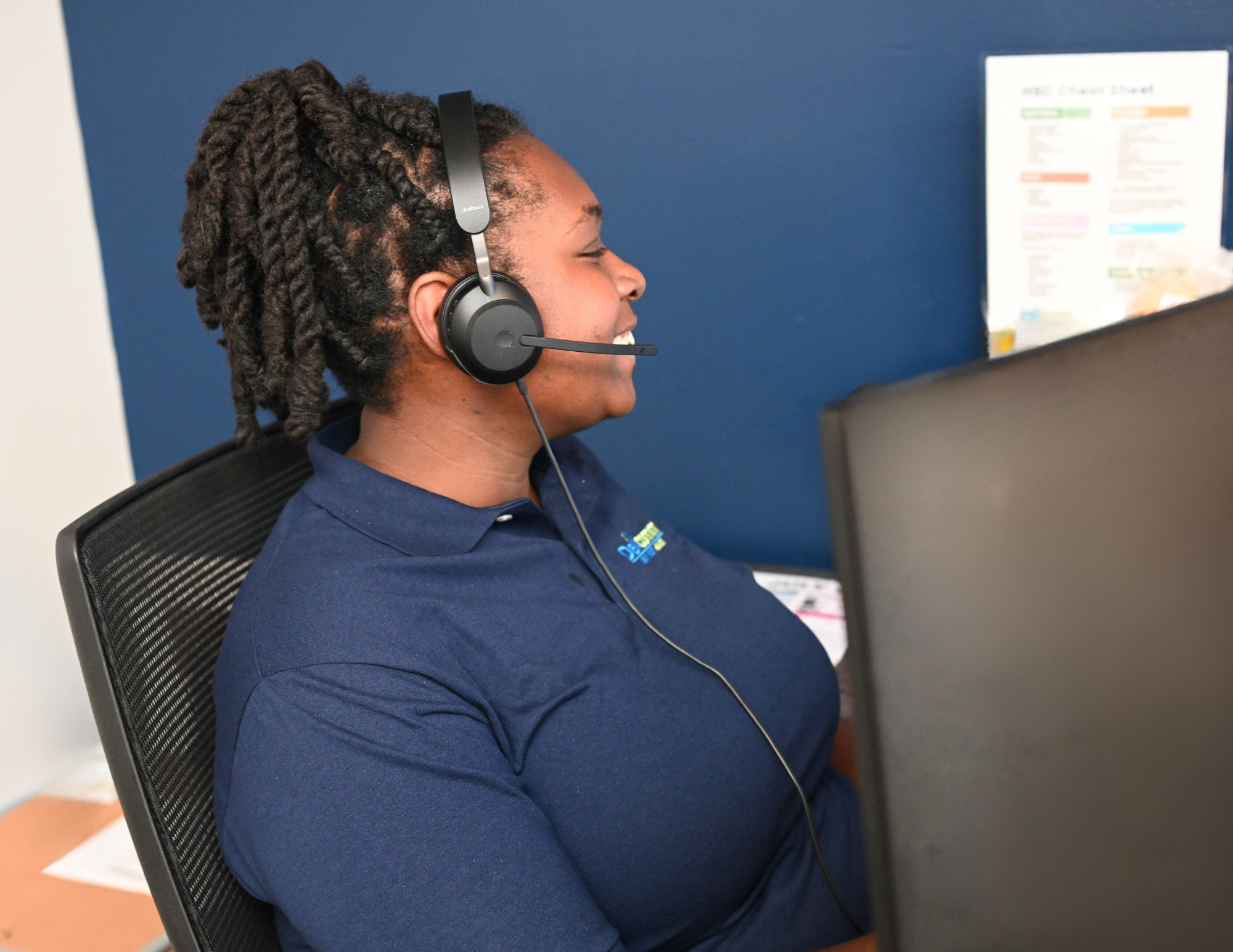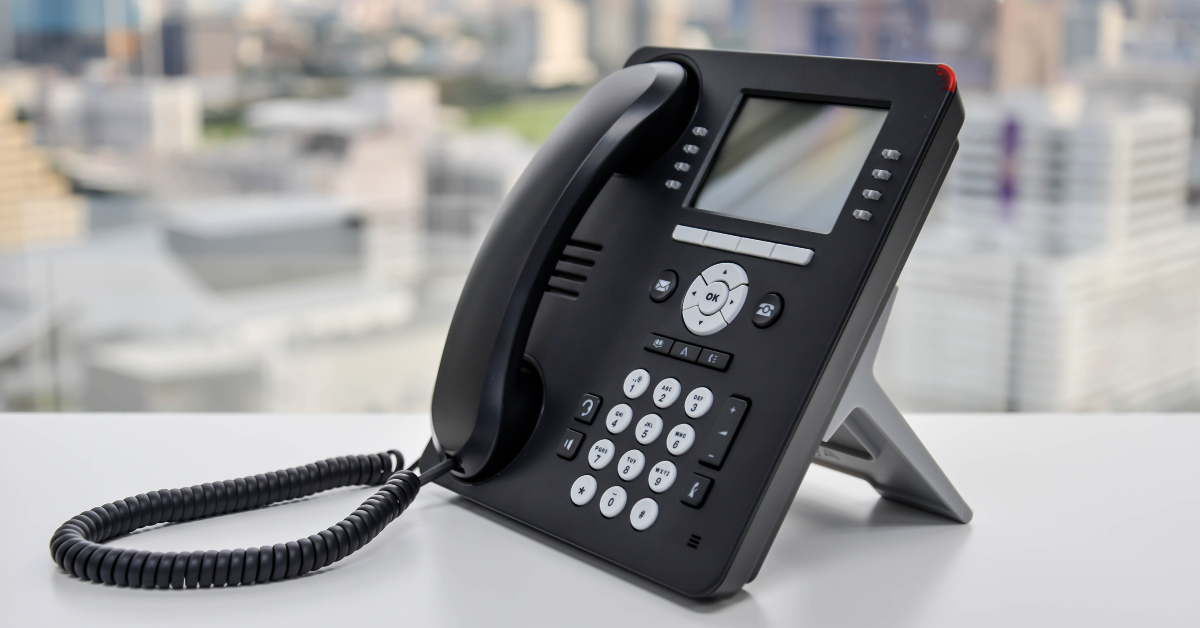Listening, not to be confused with hearing, is an active process that involves focusing on the speaker and seeking to truly understand what they’re saying. Unfortunately, the reality is that many of us are poor listeners. With so many digital distractions at our fingertips, let alone our own noisy thoughts in our minds, it can be challenging to zone in on the speaker during a conversation, and it becomes even more difficult when you’re busy at work. Nonetheless, taking a moment to practice active listening can better customer service, further develop employee relationships, and improve phone conversations.

Listening vs Hearing
Before we go about learning about how to actively listen to another, it is important to make a heavy distinction between listening and hearing.
Active listening is a skill that can never really be mastered. Rather, every day and with each conversation, it requires a conscious effort on your part. In fact, some days may be easier than others when it comes to listening. Despite, when you seek to listen to someone, you are making the conscious choice to understand what they’re saying to you. You’re not thinking about what you will say in response to them or responding to a text while their words move through your ears in the background; you’re focusing on them and listening.
In staunch contrast to listening, hearing is not something that requires a conscious effort. When you hear something, that is all you do. There is no seeking to understand or focusing involved, you simply hear words (or music or a sound) in the background of whatever it is you are doing.

What does active listening look like?
Active listening looks different depending on whether you’re on the phone or in-person, or if you’re talking with a customer or a coworker. Despite what situation you’re in, active listening will consistently involve the following practices.
Overcome Distractions
Overcoming distractions is one of the most difficult parts of active listening. There are internal distractions and external distractions. Internal distractions include thinking about what you’ll be having for lunch while the other is speaking, or even things that you cannot control, such as an aching stomach or a pounding headache. On the other hand, however, external distractions include things like your buzzing phone or your coworkers next to you having a loud conversation.
Overcoming distractions is something you must commit yourself to multiple times throughout a single conversation. When listening to another, minimize external distractions by being away from distracting people and by leaving your phone far away (not just in your pocket). On top of that, don't assume that you know what it is the speaker is trying to say or start thinking about the story you're going to share in response. Minimize internal distractions by paying attention to them as though they are a close friend or family member.

Never Interrupt
You can’t listen to someone and talk to them at the same time! When you interrupt someone, it conveys that you think what you have to say is more important than what they have to say, even if you do so on accident. Grant people the time it takes for them to gather their thoughts and get everything out before you talk over them. A lot of the time, people will say exactly what it is that you’re trying to figure out and/or learn in conversation if you just listen.
Encourage the Speaker
A key part of listening is simply conveying to the speaker that they’re being heard and understood. By encouraging the speaker, you let them know that you’re intrigued and trying to follow what they’re saying.
You can encourage the speaker by using hand gestures, letting them know to “go on,” or even to express shock; a silent nod goes a long way, as well. You can also verbally encourage the speaker by asking for more details about what they’re saying, or even simply asking “When you said… what did you mean?”

Active Listening in the Workplace: Customers, Coworkers, and on the Phone
As previously mentioned, active listening consistently involves never interrupting, overcoming distractions, and encouraging the speaker. However, each of those things can look different while in practice at the workplace depending on what you’re doing and who you’re speaking to.
Active Listening to Customers
Excellent customer service starts with active listening. When someone comes into your place of work, it is an opportunity to help them with a problem they need resolved. The phrase “the customer is always right” can prove frustrating from time to time, but it doesn’t change the fact that the customer always needs to be listened to.
Active listening is about more than just listening to the customer’s words. Pay attention to the customer’s overall body language and tone of voice. Listen to them, and as they speak, respond with head nods, or head shakes, and convey with your eyes that you understand what they’re saying to you. Actively listening to the customer widens the margin of possibility that they will, in turn, actively listen to your response. Don’t answer the phone or play on your computer while a customer is talking to you and be sure to let them finish explaining their concern(s) before you start offering solutions.

Active Listening to Coworkers and Employees
Whether you’re in a meeting or in a one-on-one conversation, actively listening to your coworkers and employees can make for a much more positive workplace. When someone is voicing a concern or mentioning an idea, failure to actively listen can be the cause of a miscommunication that could potentially avalanche into a bigger problem. Encourage the people you share the workplace with to share details about their thoughts, and certainly don’t play on your phone or computer while another is speaking to you.
At the end of the day, you share a space with your employees and coworkers, and making it a point to actively listen gives you the opportunity to learn—whether that be about them or about what they’re saying.

Active Listening on the Phone
Listening to someone who isn’t physically in your presence can be quite difficult, as all the physical gestures of listening—the head nodding, the hand gestures—no longer play a role in your conversation. That’s why your on-the-phone listening skills comes down to paying attention. You can’t look the other party in the eye when speaking on the phone, but you can avoid distractions. Though many people pride themselves in their ability to multitask, it’s simply not possible to actively listen to a caller on the phone while doing so. Although phone communication can be more challenging than talking in person, you can improve your listening (and, in turn, your customer service) by following a few dos and don’ts.
Do
- Listen carefully in case they speak on any questions that you would have to ask them later in the call (name, phone number, specifics about the issue they’re having, etc).
- Speak slowly and clearly when it comes to asking clarifying questions.
- Summarize the caller’s words and overall message to make sure you understood them correctly before hanging up.
Don’t
- Rush the caller.
- Get distracted or attempt to multitask.
- Feel as though being on the phone means you can treat or listen to the caller differently than as though they were speaking to you in-person.

Conclusion
Being a good listener takes time and practice, and some days, active listening will be easier than others. Despite, active listening is an important skill that, when put to use, can result in learning a lot from the speaker. Remember to consistently reflect on previous conversations and consider how you can be a better listener.


.png)

